How to Tell If a Horse Is Lame on a Front or Back Leg
Updated on 05/26/24
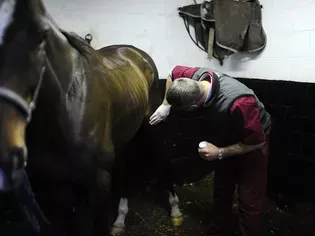
How to Tell If a Horse Is Lame on a Front or Back Leg
Horses are incredibly athletic animals that rely heavily on their legs for movement and balance. Unfortunately, lameness is a common issue that can affect horses of all ages and breeds. Lameness can be caused by a variety of factors, including injuries, infections, and conformational abnormalities.
While lameness can sometimes be difficult to detect, there are a few key signs that you can look for to help you determine if your horse is lame. One of the most important things to do is to observe your horse's gait. A lame horse will often have a shortened stride on the affected leg, and they may also appear to be favoring the other leg.
In addition to observing your horse's gait, you can also palpate the affected leg to look for any swelling or heat. If you find any abnormalities, it is important to have your horse examined by a veterinarian to rule out any underlying medical conditions.
Front Leg Lameness
Front leg lameness is typically caused by injuries to the muscles, tendons, or ligaments in the leg. Some of the most common causes of front leg lameness include:
* Tendonitis is inflammation of the tendons in the leg. This can be caused by a variety of factors, including overuse, trauma, or poor conditioning.
* Ligament injuries are tears or sprains of the ligaments in the leg. These injuries can be caused by sudden movements or falls.
* Muscle injuries are tears or strains of the muscles in the leg. These injuries can be caused by overexertion or trauma.
Signs of Front Leg Lameness
There are a few key signs that you can look for to help you determine if your horse is lame on a front leg. These signs include:
* Shortened stride on the affected leg
* Favoring the other leg
* Stiffness or reluctance to move
* Swelling or heat in the affected leg
* Pain when the leg is palpated
Back Leg Lameness
Back leg lameness is typically caused by injuries to the muscles, tendons, or ligaments in the leg. Some of the most common causes of back leg lameness include:
* Hock injuries are injuries to the hock joint. These injuries can be caused by a variety of factors, including trauma, overuse, or poor conformation.
* Stifle injuries are injuries to the stifle joint. These injuries can be caused by trauma or overuse.
* Pelvic injuries are injuries to the pelvis. These injuries can be caused by trauma or falls.
Signs of Back Leg Lameness
There are a few key signs that you can look for to help you determine if your horse is lame on a back leg. These signs include:
* Shortened stride on the affected leg
* Favoring the other leg
* Stiffness or reluctance to move
* Swelling or heat in the affected leg
* Pain when the leg is palpated
Treatment for Lameness
The treatment for lameness will depend on the underlying cause of the condition. In some cases, lameness can be treated with rest and anti-inflammatory medication. In other cases, surgery may be necessary to correct the underlying problem.
Prevention of Lameness
There are a few things you can do to help prevent lameness in your horse. These things include:
* Providing your horse with a proper diet and exercise program
* Keeping your horse's hooves properly trimmed
* Protecting your horse from injuries
* Having your horse examined by a veterinarian on a regular basis
By following these tips, you can help keep your horse healthy and sound.
Explore More Pets

Pony Breeds
The Difference Between Horses and Ponies

Horse Diseases & Conditions
What Do I Do If My Horse Colics?
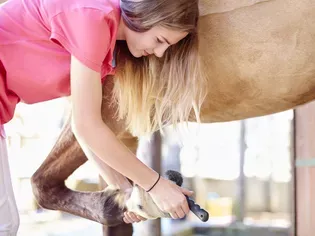
Pony Breeds
Horse and Pony Care by the Day, Week, Month and Year
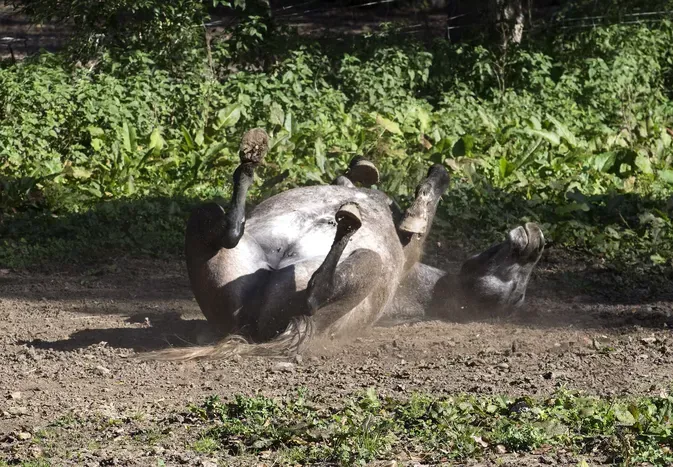
Horse Grooming
Mange in Horses
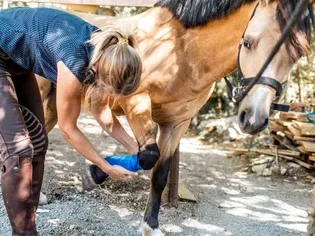
Horse Diseases & Conditions
Grease Heel in Horses

Light Horse Breeds
Gypsy Vanner Horse Breed Profile
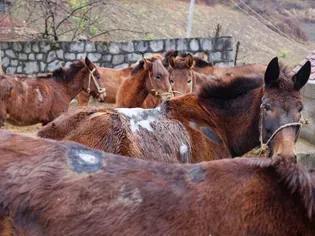
Horse Diseases & Conditions
Girth Galls and Saddle Sores

Pony Breeds
Shetland Pony Breed Profile
